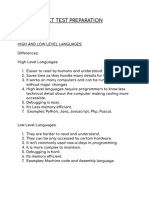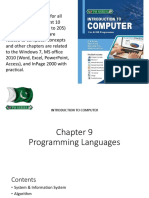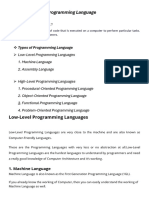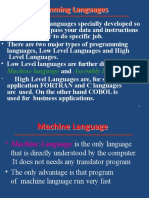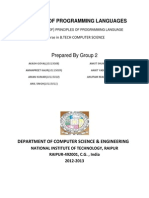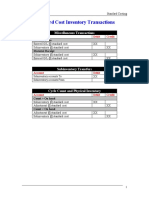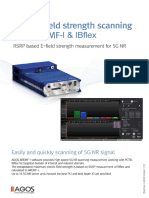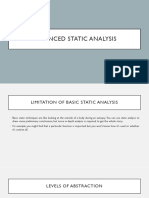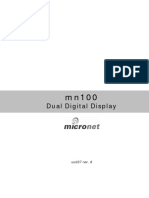Informal and Formal Algorithm
Uploaded by
ScribdTranslationsInformal and Formal Algorithm
Uploaded by
ScribdTranslationsACTIVITY 1
Informal Algorithm
1. Develop an algorithm that allows you to go from your house to the ITM.
Start:
Leave my house
Going down the stairs
Walk to the subway station
Enter the subway station
Take the subway
Get off at Floresta station
Going down the stairs
Leave the station
Take the bus from line 0
Arrive at the university city stop
Get off the bus
cross the street
arrives at the ITM
End algorithm
Formal Algorithm
1.Graphical forms to represent an algorithm (types):
Flow diagrams: it uses standardized symbols, with the steps of
algorithm written in the appropriate symbol and the symbols joined by
arrows, called flow lines, that indicate the order in which the steps
they must be executed. It is necessary to indicate within the symbols the
specific operation conceived by the programmer.
An N-S (Nassi-Shneiderman) diagram is a type of representation
graph of an algorithm that unlike the flowchart does not use
arrows to indicate the order, instead use attached blocks and their
order is established from top to bottom. The successive actions are
they write inside the successive boxes and, like in flowcharts,
Different actions can be written in a box.
2. Form to write an algorithm
We can also represent algorithms with words instead of
use graphs. This description is made in an intermediate language
callpseudocode.
Pseudocode is a way of expressing the different steps that will be
create a program, in the way most similar to a language of
programming. Its main function is to represent step by step the
solution to a problem or algorithm, in the most detailed way possible,
using a language similar to programming.
3. What is a compiler or interpreter in a computer?
An interpreter is a computer program that executes or carries out
instructions written in a programming language.
The term 'interpreter' can refer to the program that executes
the source code that has just been translated into an intermediate form, or
It can refer to the program that carries out both the translation.
like the execution.
In summary, interpreters are software programs that allow the
execution of instructions written in a programming language. They are
tools for programming in scripting languages and allow the programmer
easily detect errors as they execute the code line by line.
Additionally, interpreters are widely used in the field of computer science and
its applications are wide-ranging.
4. What is a programming language, what types exist and what are they used for?
A programming language is a set of grammatical rules (both
syntactic as well as semantic) that instruct a computer or device
behaves in a certain way. Each programming language has a
vocabulary, a unique set of keywords that follows a syntax
especially for forming and organizing computer instructions. The language of
programming emits a series of commands that help computers,
mobile phones, tablets, and other devices to operate as intended
and to perform various tasks.
Types of programming languages
Programming languages can be mainly classified as
low-level and high-level programming languages. Although they are simple in
compared to human languages, high-level languages are
more complex than low-level ones. At the same time, a high-level language
high level offers more readability compared to its low level counterpart,
whose interpretation requires specialized knowledge in architecture
computer science.
Low-level languages include assembly languages and
machine.
An assembly language contains a list of basic instructions.
and it is much harder to read than a high-level language. It is just one
level above machine language in terms of abstraction, uses
simple codes that easily convert into strings of 1s and 0s
(binary representation). It cannot be used to structure and manipulate.
complex information.
The machine language is understood directly by the unit of
computer processing. A programmer will first write their
code in a high-level language, then it will compile it into a format
machine-readable where instructions are represented in binary.
On the other hand, high-level languages are designed to be easy
to read and understand, thus allowing programmers to write the code
source when using logical and meaningful words and symbols. They encapsulate everything,
from the first algorithmic languages like FORTRAN to languages
more widespread and object-oriented languages like C++, C#, and Java.
In addition to C++, C#, and Java, the following also stand out:
Python
PHP
SQL
Ruby
Visual Basic .NET
R programming language
TypeScript







